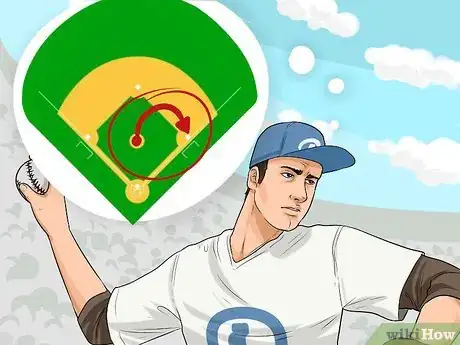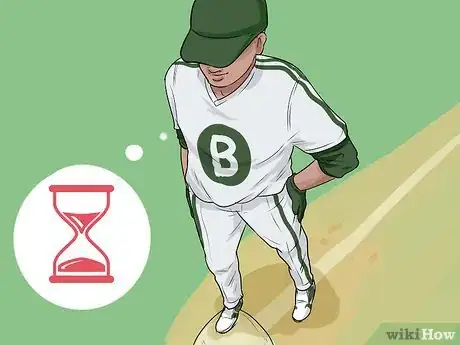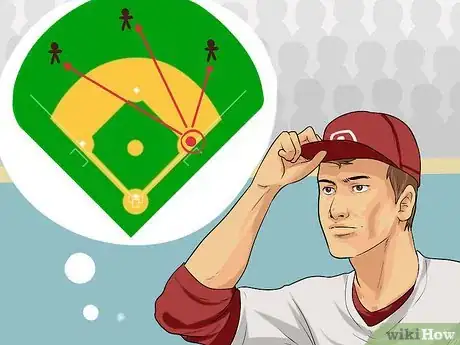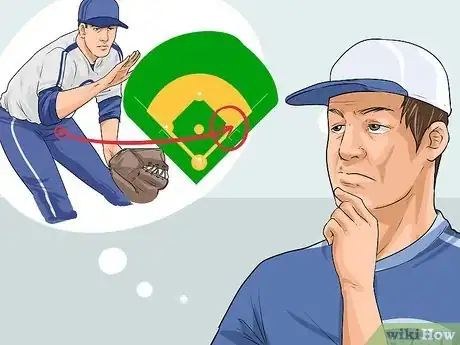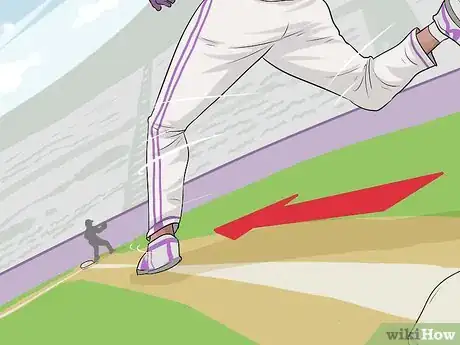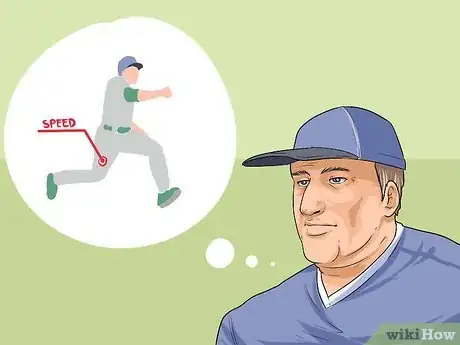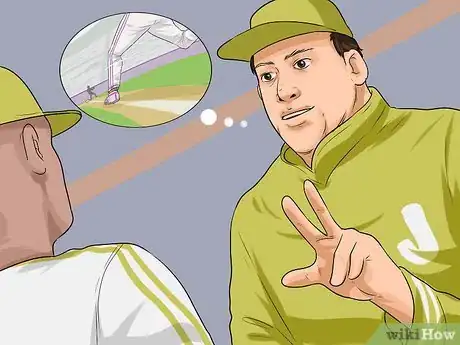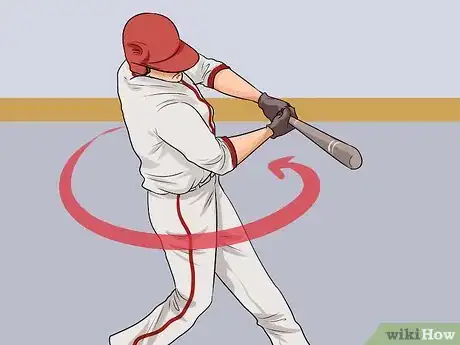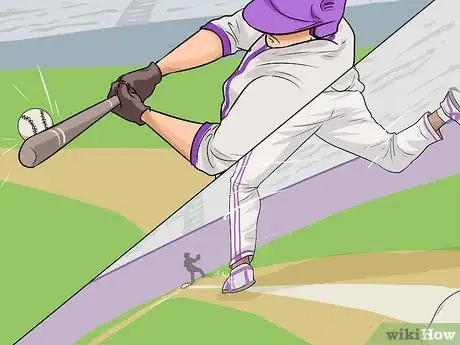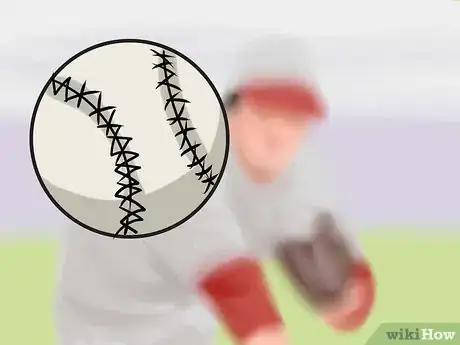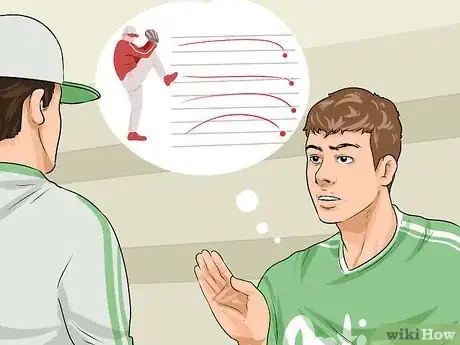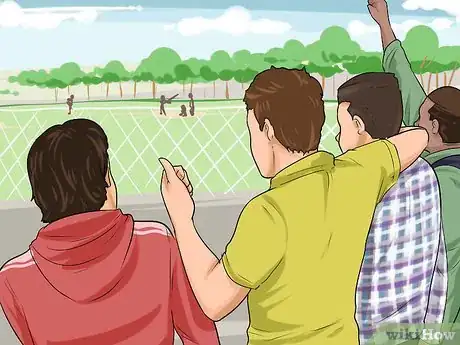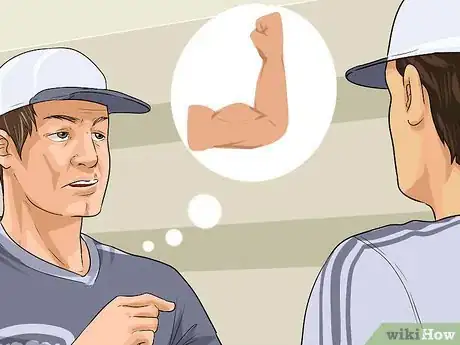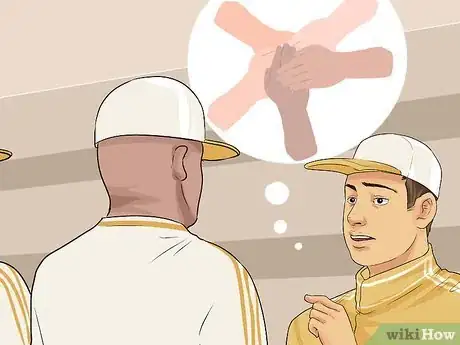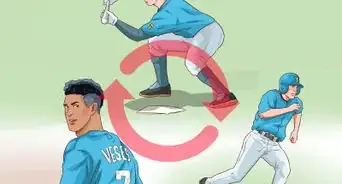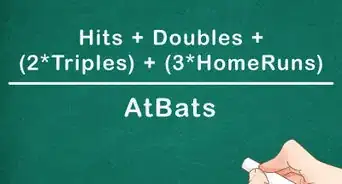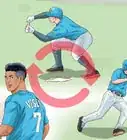This article was co-authored by Isaac Hess. Isaac Hess is a Baseball Coach, Instructor, and the Founder of MADE Baseball Development and Champion Mindset Training Program, a baseball training program based in Los Angeles, California. Isaac has over 14 years of experience coaching baseball and specializes in private lessons and tournaments. He has played baseball for both professional and collegiate leagues including Washington State University and the University of Arizona. Isaac was ranked as one of Baseball America's top 10 prospects for 2007 and 2008. He earned a BS in Regional Development from the University of Arizona in 2007.
There are 12 references cited in this article, which can be found at the bottom of the page.
This article has been viewed 47,818 times.
Winning a baseball game is not always easy. However, you can use certain tactics to help you win. You can also improve certain aspects of your team, such as speed, hitting, pitching, and defense, you are more likely to win games. Another important aspect of winning baseball games is building up team spirit, as a team that plays better together will win more games.
Steps
Using Specific Strategies to Win Games
-
1Strive to get the first out in every inning. Getting the first out stops the other team from gaining momentum. Additionally, it's harder for the other team to get runs once they have on out on the board.[1]
-
2Always throw to the next base. That is, when a runner is rounding the bases, always toss the ball to the base in front of the runner. Throwing ahead makes it easier to get the runner out.[2]Advertisement
-
3Wait for the right moment to reach third. Coaches and players know that they should only run to third base on the first and last out if they know they can make it easily. It's not worth running if they aren't sure they can make it.[3]
-
4Check the outfielders' positions before running. While it's important to check with the base coach and to look at the number of outs, it's also important for the players to note where outfielders are playing. That way, they know when to run when the ball is hit. If it's hit between outfielders, it's time to run hard.[4]
-
5Make sure first is covered. When a ball is hit to right field, make sure your first basemen knows to be on the base. If she's not there, your team could be missing out on too many outs.[5]
-
6Play full out. When balls are going towards outfield, players should be attempting to stop them in the infield by hitting them down with their gloves. It's much easier to get an out if the ball is stopped in the infield.[6]
Using Speed to Win Games
-
1Increase players' speed. Increasing speed is important, because the faster that players run the bases, the more runs they'll score. One way to increase players' speed is through strength-training exercises.[7]
- Try squats. With your legs set apart and toes pointed outward, lower yourself towards the floor. You should stop when your thighs are parallel to the ground. Stand back up and repeat. This exercise builds up leg muscles.[8]
- Try hill sprints. On a slight incline, run up the hill, increasing speed in short bursts. Slow down between bursts. These exercises build up speed over time, as well as strengthen muscles.[9]
-
2Use fast runners to steal bases. The player should start by leading off the base.
- That is, the player should start moving off the bag as the pitcher is getting ready to throw.
- Once the pitcher starts throwing, the player should start running to the next base. The idea is to make it to the base before the catcher has a chance to throw the runner out.
- If the player goes too far, he or she can be picked off, meaning the pitcher can throw to the baseman before pitching and get the player out.
-
3Increase speed to beat out infield hits. With a good defense, the other team can easily get a player out with an infield hit. However, faster runners are more likely to get on base or advance to the next base.
-
4Encourage runners to score from first or second. By picking up speed, runners are more likely to be able to score from these bases, increasing your chances of winning.
Encouraging Good Hitting
-
1Teach rotational hitting. Rotational hitting involves putting your whole body behind a swing, as opposed to linear hitting, which focuses on the upper body.
- In rotational hitting, the batter moves the bat with his or her body, rather than ahead of the hips.
- Additionally, the swing of a rotational hitter starts low and moves high. On the other hand, the swing of a linear hitter starts high and moves low.
- Rotational hitters hit the ball right in the center. Linear hitters often hit the bottom of the ball, creating backspin.
-
2Encourage positivity. Be positive, and encourage a player to do his or her best. Similarly, teach your players to think positively about their hitting. For instance, help them learn how to visualize a positive outcome as they step up to the plate.[10] These types of visualizations can help your players swing and hit better, as confidence boosts ability.[11]
-
3Use bunts. Sometimes, the best way to score or to advance a runner is for a player to bunt. Bunting is when the ball is hit lightly into the infield so that the pitcher or infield players must run in to pick it up, giving a player time to advance on base.
- To bunt, the player should grip the bat with the bottom hand as normal but move up the other hand towards the middle. Hold the bat out over the plate, and essentially, allow it do the work by letting the ball hit it as it comes over the plate.[12]
-
4Try hit-and-runs. Hit-and-runs are when a base runner takes off from the base as soon as the ball leaves the pitcher's hand. Obviously, the batter must hit the ball in some way for this to work. Nonetheless, it can make it easier for the runner to advance and get closer to scoring.[13]
-
5Know the pitcher. If possible, study the pitcher prior to the game. By knowing what types of pitches are likely to come across the plate, you can better prepare your players to hit the ball well and win the game.[14]
-
6Teach your players to analyze from the dugout. That is, even if you don't have advanced knowledge of the pitcher, your players can learn about the pitcher before they step up to the plate.
- Look at speed, what types of pitches they're throwing, how their special pitches move, and what side of the plate they're pitching from. All of these can help your players be better prepared when they step up to the plate.
Creating a Great Defense
-
1Be solid down the middle. As many balls go down the middle of the field, you need especially solid defense in that area, particularly your catcher, center fielder, your shortstop, and second baseman.
- The catcher is especially important. The catcher will help throw people out on base, catch balls to get people out at home, and even call pitches. Your catcher needs to be steady and consistent.
-
2Know the other team's batters. If possible, study how the other team's players bat. For instance, maybe one player always pulls to the left or right. If so, you can compensate by shifting your players that direction, making it easier to field a hit.[15]
-
3Know your pitchers. Certain pitches will lead to certain kinds of hits, such as ground balls. If you're pitcher is inclined to create a certain type of hit, you can adjust your defensive strategy to match.[16]
-
4Teach your players to communicate. When balls come flying between two fielders, teach them to call who's going to get the ball so you don't have collisions.
-
5
Building Up Solid Pitchers
-
1Throw strikes. Though a bit obvious, you need pitchers that can throw strikes consistently. That means staying in the strike zone, while still throwing pitches that batters have a hard time hitting.
-
2
-
3Know the other team's batters. By studying what kinds of pitches the other batters can and cannot hit, you can help the pitcher know what pitches to throw to what batter.[21]
-
4Find an ace pitcher. An ace pitcher can turn things around for your team, especially if you've been losing for a period of time. Ace pitchers can help you win tournaments.
- The most important trait of an ace pitcher is consistency. Your ace should be able to throw great pitches on a regular basis, even if he or she does not have as fast a pitch as other pitchers.
-
5Have back-up. Every pitcher has to be taken out of the game sometime. You need good relief pitchers and closers who can follow up for your star pitchers and help win the game.
-
6Try finding left-handed pitchers. Because so few pitchers throw left-handed, having one pitch on your team can sometimes bewilder batters, working to your advantage.
Encouraging Team Spirit
-
1Spend time together. One of the best ways to create team spirit is to go out of town together. For instance, you can sign your team up for an out-of-town tournament. Being together for an extended period of time helps build up team togetherness.[22]
- Team spirit is important because a team that gets to know each other off the field will play better on the field.
-
2Set rules for the team about respect. That is, create an environment based around respect and encouragement. If you encourage that type of environment, you'll build up your team spirit.[23]
- One way you can push encouragement and respect is to actually set up guidelines about how your team can talk to each other. For instance, one of the guidelines could be no negative talk about another player during practice.
- Lead by example. Though you may need to point out where a player needs to improve, always take time to acknowledge how a player is doing well.
-
3Talk about strengths. That is, ask your players to talk about what they bring to the team as individuals. These strengths don't need to just be baseball skills; they can also be personality traits, such as "always positive." By talking about what each individual can contribute, you start building up the team as a whole.[24]
-
4
-
5Establish team values. You can establish them for your team, but you can also take some time to brainstorm them together. When brainstorming what your team values, also talk about what the words mean to the people on the team.
- For instance, some values you could establish for your team are honesty, integrity, professionalism, and toughness.
References
- ↑ http://www.baseball-excellence.com/index.cfm?Method=Instructions_Instructionsdetail&id=9
- ↑ http://www.baseball-excellence.com/index.cfm?Method=Instructions_Instructionsdetail&id=9
- ↑ http://www.coachandplaybaseball.com/baseball-strategy.html
- ↑ http://www.coachandplaybaseball.com/baseball-strategy.html
- ↑ http://www.baseball-excellence.com/index.cfm?Method=Instructions_Instructionsdetail&id=9
- ↑ http://www.baseball-excellence.com/index.cfm?Method=Instructions_Instructionsdetail&id=9
- ↑ http://www.stack.com/2008/11/01/building-lower-body-strength-for-baseball-speed/
- ↑ http://www.stack.com/2008/11/01/building-lower-body-strength-for-baseball-speed/
- ↑ http://trainbaseball.com/faster-baseball-speed
- ↑ Isaac Hess. Baseball Coach & Instructor. Expert Interview. 20 March 2020.
- ↑ http://www.qcbaseball.com/hitting/baseball-hitting.aspx
- ↑ http://www.active.com/baseball/articles/how-to-teach-the-sacrifice-bunt
- ↑ http://www.ducksters.com/sports/baseballstrategy.php
- ↑ http://www.ducksters.com/sports/baseballstrategy.php
- ↑ http://www.ducksters.com/sports/baseballstrategy.php
- ↑ http://www.ducksters.com/sports/baseballstrategy.php
- ↑ Isaac Hess. Baseball Coach & Instructor. Expert Interview. 20 March 2020.
- ↑ http://www.theoleballgame.com/baseballdrills-teamdefense.html
- ↑ http://www.ducksters.com/sports/baseballstrategy.php
- ↑ http://www.ducksters.com/sports/baseballstrategy.php
- ↑ http://www.ducksters.com/sports/baseballstrategy.php
- ↑ http://blog.teamsnap.com/how-to/5-ways-to-encourage-team-building-in-youth-baseball/
- ↑ http://www.trainingmag.com/content/how-create-team-spirit
- ↑ http://ww2.kqed.org/mindshift/2013/04/18/how-to-foster-collaboration-and-team-spirit/
- ↑ Isaac Hess. Baseball Coach & Instructor. Expert Interview. 20 March 2020.
- ↑ http://ww2.kqed.org/mindshift/2013/04/18/how-to-foster-collaboration-and-team-spirit/

